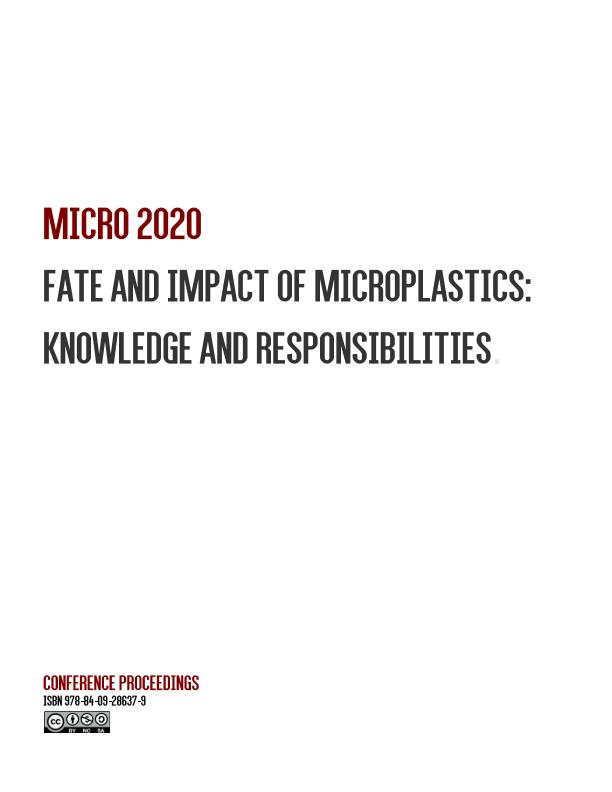Evento
Abundance and microplastic ingestion by commercial shrimp Pleoticus muelleri at an impacted coastal environment (Southwestern Atlantic)
Fernandez Severini, Melisa Daiana ; Forero Lopez, Ana Deisy; Colombo, Carolina Victoria; Ardusso, Maialen Gisel
; Forero Lopez, Ana Deisy; Colombo, Carolina Victoria; Ardusso, Maialen Gisel ; Buzzi, Natalia Sol
; Buzzi, Natalia Sol ; Rimondino, Guido Noé
; Rimondino, Guido Noé
 ; Forero Lopez, Ana Deisy; Colombo, Carolina Victoria; Ardusso, Maialen Gisel
; Forero Lopez, Ana Deisy; Colombo, Carolina Victoria; Ardusso, Maialen Gisel ; Buzzi, Natalia Sol
; Buzzi, Natalia Sol ; Rimondino, Guido Noé
; Rimondino, Guido Noé
Tipo del evento:
Conferencia
Nombre del evento:
MICRO 2020 International Conference Lanzerote and Beyond Fate and Impacts of microplastic: Knowledge and responsabilities
Fecha del evento:
23/11/2020
Institución Organizadora:
Marine Sciences For Society researchers;
World Network of Island;
Coastal Biosphere Reserves;
Unesco;
Título del Libro:
MICRO 2020 International Conference Lanzerote and Beyond Fate and Impacts of microplastics
Editorial:
Micro
ISBN:
978-84-09-28637-9
Idioma:
Inglés
Clasificación temática:
Resumen
Microplastics (particles of size < 5 mm) are recognized as emerging pollutants that have been found in most of the world´s aquatic environments. They are of particular concern due to their capability to be ingested, enabling bioaccumulation and/or bio-magnification through marine food webs1. Focusing on Argentina´s coastal wetlands, the Bahía Blanca Estuary (BBE) is considered one of the most important in this country due to its high economic impact and also for being habitat of important commercial species like macrocrustaceans and fishes. The shrimp Pleoticus muelleri is an important economic resource for artisanal fishing and highly consumed in Argentina. For this reason, we investigated the abundance and characteristic of MPs in the abdominal muscle and gastrointestinal tract of the shrimp P. muelleri, as well as in the surface waters from the inner zone of BBE. The results showed that the dominant shape of MPs were fibers both in surface waters and shrimps. The fibers´ colors were mainly blue and black in surface waters, while in shrimps, they were transparent and black. The mean abundance of MPs in surface water and the shrimp´s abdominal tissues were 31.03 ± 3.01 items.L-1 and 3.91 items. g-1 wet weight, respectively. Infrared Spectroscopy suggests that these fibers found in both environmental matrices correspond to semi-synthetic cellulose-based remains, poly(amide), polyethylene (PE), and polypropylene (PP). Therefore, the information provided by this study generates new knowledge about the materials of the sewage discharges, which should be considered for stakeholders in the management and conservation of this large coastal wetland.
Palabras clave:
MICROPLASTICOS
,
LANGOSTINOS
,
ESTUARIOS
Archivos asociados
Licencia
Identificadores
Colecciones
Eventos(IADO)
Eventos de INST.ARG.DE OCEANOGRAFIA (I)
Eventos de INST.ARG.DE OCEANOGRAFIA (I)
Citación
Abundance and microplastic ingestion by commercial shrimp Pleoticus muelleri at an impacted coastal environment (Southwestern Atlantic); MICRO 2020 International Conference Lanzerote and Beyond Fate and Impacts of microplastic: Knowledge and responsabilities; Lanzerote; España; 2020; 539-539
Compartir



